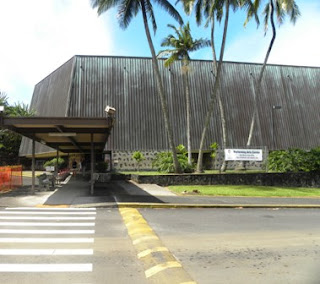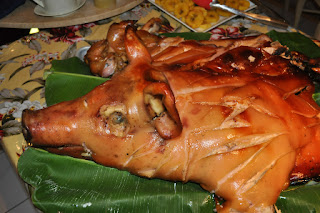 |
| University of Hawaii -- Hilo |
One of the real advantages to living on the east side of the Big Island is the University of Hawaii at Hilo. I have been fortunate to lecture at the school the past two years teaching Introductory Business to some 40-60 students, depending on the semester, and a management class in Organizational Behavior to about 30-40 upper class men.
The students in my classes have been heavily represented by the Hawaiian Islands but also came from the mainland, Guam, Tonga, Samoa, Micronesia, Japan, Korea, the Philippines and Sweden. And their overall attitude and approach to learning is excellent.
The University is composed of six Colleges, and has received recognition for numerous academic programs including its marine biology, volcanology, astronomy, Hawaiian language, pharmacy, agriculture, computer science, and nursing programs.
Its College of Hawaiian Language, Ka Haka ʻUla O Keʻelikōlani, is the only school in the United States to offer graduate degrees for study in an indigenous language.
And the University’s College of Pharmacy is the only approved pharmacy school by the Accreditation Council for Pharmacy Education (ACPE) in the State of Hawaiʻi and the Pacific Islands.
According to one survey by U.S. News and World Reports the University of Hawaii-Hilo ranks in the top ten for having both the most ethnically diverse and the lowest percentage of students with debt at graduation.
Seeing this University up close almost daily made me wonder about its origins. The school was originally founded as the Hawaiʻi Vocational College (Hawaiʻi College) and in 1947 it became as an extension division of UH Mānoa (the main University of Hawaii campus).
UH Hilo enrolled 1,600 students by 1986. And since 1998, the university has increased enrollment every year. The Fall 2011 headcount of 4,077 is the highest enrollment in the history of the campus and a 150% increase since 1986.
The University of Hawaii at Hilo is truly the jewel in the crown for those fortunate to visit of live near Hawaii’s second biggest city.









